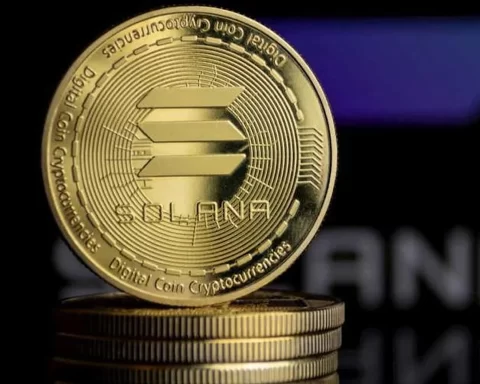Potential inertia in the price of Bitcoin following the Bitcoin halving could destabilise the share prices of high-cost public miners in the United States, potentially compelling some to relocate overseas.
“We might see a mining stock bloodbath as investors realise these companies are barely making money,” says Jaran Mellerud, founder and chief mining strategist of Hashlabs Mining, alluding to the potential outcome if the Bitcoin price fails to experience a significant rise after the halving.
Mellerud is currently observing the three to four-month period post-halving to gauge the impact on miner profitability due to the reduction in block rewards.
The upcoming Bitcoin halving is anticipated to take place on April 24, according to CoinMarketCap.
It will decrease Bitcoin miner rewards from 6.25 BTC (£234,750) to 3.125 BTC (£117,375), although historical trends suggest a subsequent surge in the Bitcoin price.
During the last halving event on May 11, 2020, Bitcoin was valued at $8,750 and experienced a staggering 430% increase five months later in October, soaring from $11,500 to $61,300 by mid-March 2021.
However, if Bitcoin fails to rally significantly within that three to four-month timeframe, “a significant portion of the network might need to power down their machines, particularly those paying hosting rates of $0.07 per kWh or more,” Mellerud noted, highlighting a notable concentration of these inefficient miners in the United States.
Consequently, Mellerud anticipates a shift in some of Bitcoin’s hash rate from the U.S. to countries with lower electricity rates, particularly in Africa and Latin America.
“My company, Hashlabs, is currently witnessing substantial demand from US-based miners who wish to relocate their machines to Ethiopia, where hosting rates are 30-40% lower than in the United States.”
Concerns regarding profitability surfaced in late January when Cantor Fitzgerald reported that 11 publicly listed Bitcoin miners would not be profitable post-halving if Bitcoin’s price remained around $40,000 (the price of Bitcoin at the time).
Cantor Fitzgerald’s “all in per coin” metric encompasses the total costs a Bitcoin miner would incur in producing a single Bitcoin, encompassing electricity costs, hosting fees, and other expenses.
READ MORE: Solana NFT Sales Skyrocket to Over £5 Billion, Setting New Record High
Nonetheless, with Bitcoin’s price currently standing at $51,000, only four of the 13 mining firms fall below the profitability threshold.
However, head analyst at Bitcoin mining firm Blockware Solutions, Mitchell Askew, informed Cointelegraph that most U.S. public miners would maintain profitability, especially those that invested in more efficient machines during the bear market.
Askew refuted Mellerud’s claim that most inefficient miners are based in the U.S., asserting that they constitute only a small fraction of Bitcoin’s total hash rate, making any hash rate loss negligible.
Nevertheless, even in the event of unprofitability, Askew outlined several reasons preventing U.S. miners from relocating overseas.
“[Many of them] are bound by fixed hosting contracts and must continue mining regardless of profitability,” while others mine primarily to accumulate non-Know Your Customer Bitcoin and are less concerned with profitability, according to Askew.
Mellerud identified Ethiopia, Nigeria, and Kenya as the most promising African countries to attract a larger share of the hash rate in the event of a mining migration.
Mellerud particularly highlighted Ethiopia’s “massive hydropower surplus” and the influx of Chinese miners as factors contributing to its appeal, projecting the African nation to capture 5–10% of Bitcoin’s total hash rate over the next few years.
Meanwhile, Mellerud identified Argentina and Paraguay as the most promising mining destinations in South America.
Read the latest crypto news today




